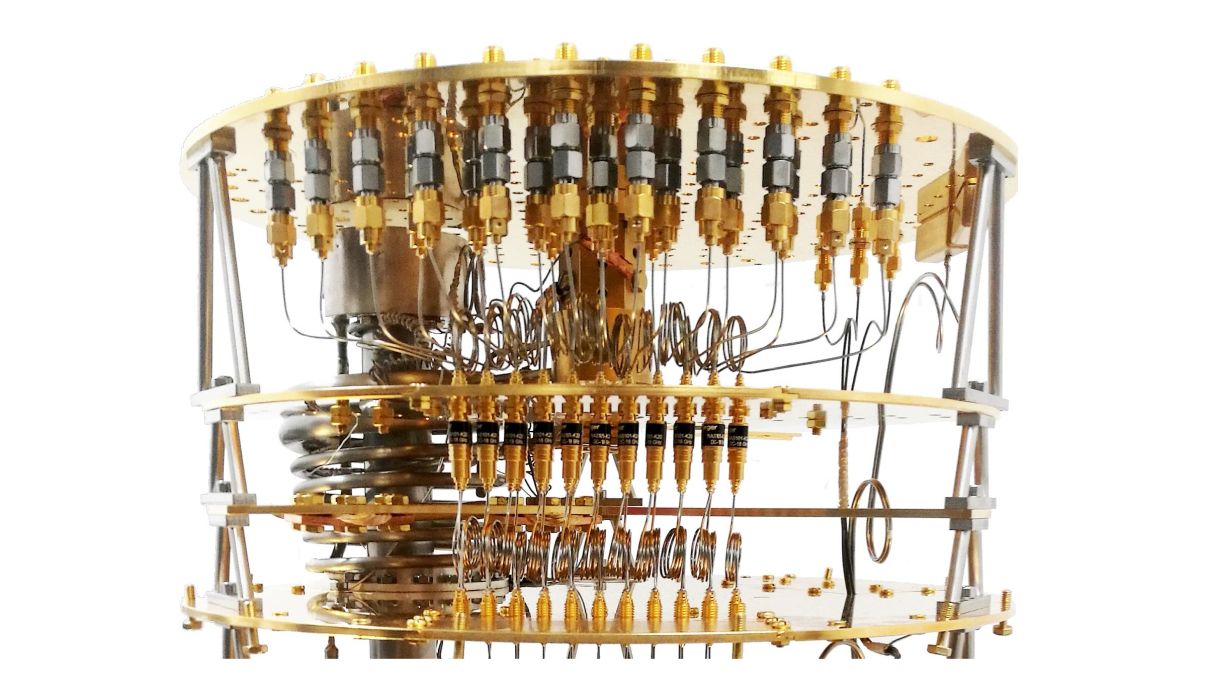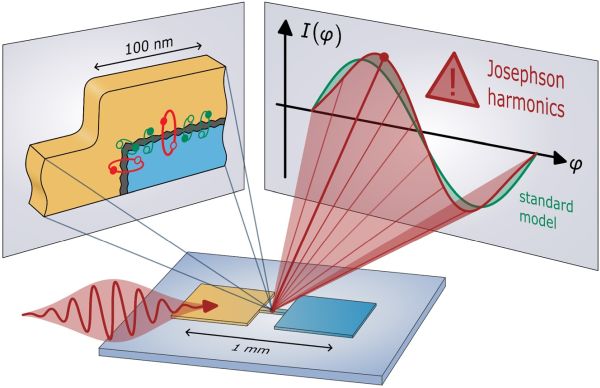
Physicists from Forschungszentrum Jülich and the Karlsruhe Institute of Technology have uncovered that Josephson tunnel junctions - the fundamental building blocks of superconducting quantum computers - are more complex than previously thought. Just like overtones in a musical instrument, harmonics are superimposed on the fundamental mode. As a consequence, corrections may lead to quantum bits that are 2 to 7 times more stable. The researchers support their findings with experimental evidence from multiple laboratories across the globe, including the University of Cologne, Ecole Normale Supérieure in Paris, and IBM Quantum in New York. (DOI: 10.1038/s41567-024-02400-8)
It all started in 2019, when Dr. Dennis Willsch and Dennis Rieger - two PhD students from FZJ and KIT at the time and joint first authors of the paper - were having a hard time understanding their experiments using the standard model for Josephson tunnel junctions. This model had won Brian Josephson the Nobel Prize in Physics in 1973. Excited to get to the bottom of this, the team led by Professor Ioan Pop scrutinized further data from the Ecole Normale Supérieure in Paris and a 27-qubit device at IBM Quantum in New York, as well as data from previously published experiments. Independently, researchers from the University of Cologne were observing similar deviations of their data from the standard model.
"Fortunately, Gianluigi Catelani, who was involved in both projects and realized the overlap, brought the research teams together!", recalls Dr. Dennis Willsch from FZ Jülich. "The timing was perfect," adds Dr. Chris Dickel from the University of Cologne, "since, at that time, we were exploring quite different consequences of the same underlying problem." Josephson tunnel junctions consist of two superconductors with a thin insulating barrier in-between and, for decades, these circuit elements have been described with a simple sinusoidal model (see image).

the researchers can analyze the fundamental equation that describes the Josephson tunnel
junction of the circuit.
Right part: The researches have observed significant deviations (red curve) from the
sinusoidal standard model (green curve).
Left part: Schematic zoom-in of a tunnel junction consisting of two superconductors (yellow/blue)
with a thin insulating barrier in-between. The large conduction channels (red loops) can be
responsible for the observed deviations from the standard model.
(Graphic: Dennis Rieger/ Patrick Winkel, KIT)
However, as the researchers demonstrate, this "standard model" fails to fully describe the Josephson junctions that are used to build quantum bits. Instead, an extended model including higher harmonics is required to describe the tunneling current between the two superconductors. The principle can also be found in the field of music. When the string of an instrument is struck, the fundamental frequency is overlaid by several harmonic overtones.
"It's exciting that the measurements in the community have reached the level of accuracy at which we can resolve these small corrections to a model which has been considered sufficient for more than 15 years", Dennis Rieger remarks.
When the four coordinating professors - Ioan Pop from KIT and Gianluigi Catelani, Kristel Michielsen and David DiVincenzo from FZJ - realized the impact of the findings, they brought together the large collaboration of experimentalists, theoreticians, and material scientists, to join their efforts in presenting a compelling case for the Josephson harmonics model. In the Nature Physics publication, the researchers explore the origin and consequences of Josephson harmonics. "As an immediate consequence, we believe that Josephson harmonics will help in engineering better and more reliable quantum bits by reducing errors up to an order of magnitude, which brings us one step closer towards the dream of a fully universal superconducting quantum computer," the two first authors conclude.
Original Publikation
Dennis Willsch, Dennis Rieger et al.: Observation of Josephson harmonics in tunnel junctions. Nature Physics, 2023. DOI: 10.1038/s41567-024-02400-8
https://doi.org/10.1038/s41567-024-02400-8
Being "The Research University in the Helmholtz Association", KIT creates and imparts knowledge for the society and the environment. It is the objective to make significant contributions to the global challenges in the fields of energy, mobility, and information. For this, about 9,800 employees cooperate in a broad range of disciplines in natural sciences, engineering sciences, economics, and the humanities and social sciences. KIT prepares its 22,300 students for responsible tasks in society, industry, and science by offering research-based study programs. Innovation efforts at KIT build a bridge between important scientific findings and their application for the benefit of society, economic prosperity, and the preservation of our natural basis of life. KIT is one of the German universities of excellence.






